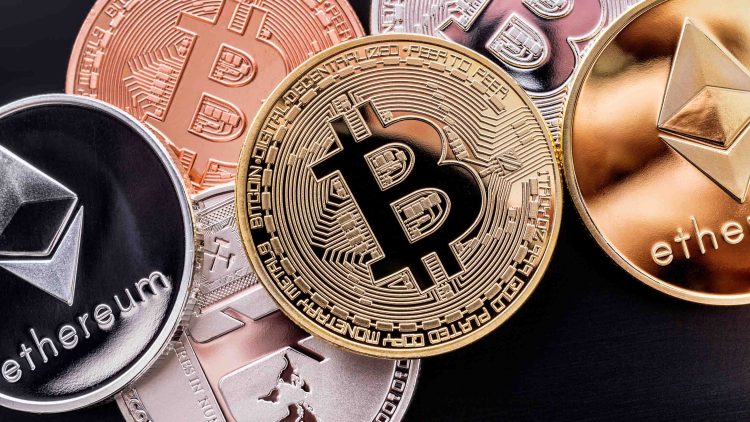In the past decade, cryptocurrencies like Bitcoin and Ethereum have revolutionized the financial landscape by providing decentralized, peer-to-peer alternatives to traditional banking and monetary systems. As these digital currencies continue to gain popularity, cryptocurrency mining has evolved into a multi-billion-dollar industry. However, with this surge in mining activities comes growing concern over its energy consumption and environmental impact.
Mining cryptocurrencies involves using specialized hardware to solve complex mathematical problems, which requires vast amounts of electrical energy. The increasing demand for mining operations has led to debates about their sustainability, their carbon footprint, and their effect on the environment. This article explores the relationship between cryptocurrency mining, energy consumption, and the environment, while also examining potential solutions to mitigate these effects.
1. Understanding Cryptocurrency Mining and Its Energy Requirements
1.1. What is Cryptocurrency Mining?
Cryptocurrency mining is a process by which new units of a digital currency are created and transactions are verified and added to a blockchain ledger. In a Proof of Work (PoW) system, which is used by Bitcoin and many other cryptocurrencies, miners must solve computational puzzles to validate transactions. This is done by competing against other miners to find a solution to a cryptographic problem.
When a miner successfully solves a puzzle, they are rewarded with new coins or tokens, and the transaction is added to the blockchain. This process requires significant computational power, and as the network grows, so does the difficulty of the problems miners must solve, leading to an increase in energy consumption.
1.2. Energy Consumption in Bitcoin Mining
Bitcoin is the most well-known cryptocurrency and is based on the Proof of Work (PoW) consensus algorithm. According to recent studies, Bitcoin mining consumes an enormous amount of energy. As of 2021, it is estimated that the Bitcoin network consumes around 120 terawatt-hours (TWh) annually. This level of energy consumption rivals the total energy usage of entire countries such as Argentina or the Netherlands.
Bitcoin mining’s reliance on ASIC (Application-Specific Integrated Circuits) miners, which are highly specialized machines designed for one purpose—solving cryptographic puzzles—further intensifies the energy demand. As the competition to mine Bitcoin becomes more fierce, these machines become more powerful, leading to greater energy consumption.
1.3. Mining and Other Cryptocurrencies
While Bitcoin is the largest consumer of energy, it is not alone. Other popular cryptocurrencies, such as Ethereum, Litecoin, and Bitcoin Cash, also rely on Proof of Work algorithms and, consequently, consume vast amounts of electricity.
Ethereum, for example, used to rely on PoW but transitioned to Proof of Stake (PoS) in 2022, which drastically reduced its energy consumption. However, many smaller cryptocurrencies continue to use PoW and thus contribute significantly to the global energy demand.
The energy consumption problem is not confined to Bitcoin. It is a widespread issue in the cryptocurrency industry, as mining operations compete to process transactions faster and more efficiently.
2. The Environmental Impact of Cryptocurrency Mining
As cryptocurrency mining operations increase, so does their environmental impact. The energy source used to power mining operations plays a crucial role in determining how environmentally damaging these activities are.
2.1. Carbon Footprint of Bitcoin Mining
The energy consumed by cryptocurrency mining operations is primarily sourced from non-renewable energy, such as coal, natural gas, and oil. In regions where electricity generation relies on these sources, cryptocurrency mining contributes significantly to carbon emissions.
A study by the University of Cambridge found that Bitcoin’s carbon footprint is equivalent to the carbon emissions of New Zealand. The heavy reliance on fossil fuels for electricity generation in countries like China (which has been a hub for Bitcoin mining) has led to significant air pollution and smog in certain regions.
While renewable energy sources are becoming more popular among mining operations, the adoption of green energy is still relatively low in comparison to traditional energy sources. This mismatch results in a net increase in greenhouse gas emissions from Bitcoin mining.
2.2. E-Waste from Mining Hardware
In addition to the carbon footprint, e-waste from mining hardware is another pressing environmental concern. Mining equipment, particularly ASIC miners, has a limited lifespan. As new, more powerful machines are developed, older machines become obsolete and are often discarded. This leads to a significant amount of electronic waste that needs to be processed and recycled.
The growing demand for mining equipment, combined with the rapid technological advancements in the space, has led to a global e-waste crisis. According to estimates, millions of tons of old mining hardware are being discarded each year, contributing to the accumulation of e-waste in landfills and waste disposal facilities.
2.3. Local Environmental Damage from Mining Operations
Mining operations are often located in remote or rural areas where electricity costs are cheaper. However, the scale of these operations can lead to land degradation and habitat destruction. Large-scale mining farms require significant water usage for cooling purposes, and the construction of mining facilities can disrupt local ecosystems.
For example, in countries like Kazakhstan, where much of the world’s Bitcoin mining was previously concentrated, mining operations have led to concerns about the depletion of local water resources and pollution from cooling processes. In some cases, mining operations have been blamed for the destruction of natural habitats and increased environmental degradation.

3. Solutions to Mitigate the Environmental Impact of Cryptocurrency Mining
Despite the substantial environmental impact of cryptocurrency mining, there are several solutions and technologies being explored to reduce its carbon footprint and energy consumption. These solutions focus on energy efficiency, renewable energy, and more sustainable mining practices.
3.1. Transition to Renewable Energy
One of the most promising ways to reduce the environmental impact of cryptocurrency mining is to transition from fossil fuels to renewable energy sources, such as wind, solar, and hydroelectric power.
Several cryptocurrency mining companies are already making efforts to shift to renewable energy. For example, Hut 8 Mining has committed to using 100% renewable energy to power its Bitcoin mining operations. Similarly, companies like Greenidge Generation are partnering with natural gas power plants that utilize renewable natural gas (RNG), helping to reduce the carbon emissions associated with mining.
Countries like Iceland and Norway, where geothermal and hydroelectric power are abundant, have attracted mining operations due to the availability of clean energy. The environmental impact of mining in these regions is significantly lower compared to countries where coal and natural gas are the primary energy sources.
3.2. Transition to Energy-Efficient Consensus Mechanisms
Another solution lies in the shift from Proof of Work (PoW) to Proof of Stake (PoS) or other energy-efficient consensus mechanisms. PoS does not require miners to solve complex mathematical puzzles, reducing the overall energy demand. Ethereum’s transition to PoS is one of the most significant steps taken toward reducing the energy consumption of blockchain networks.
In a PoS system, validators are chosen based on the amount of cryptocurrency they hold and are willing to “stake” as collateral. This reduces the need for computational power, which is the primary driver of energy consumption in PoW.
Other blockchain projects, such as Polkadot and Cardano, use PoS or variations of it to achieve consensus with minimal energy requirements.
3.3. Optimizing Mining Hardware
Another avenue for reducing energy consumption is the optimization of mining hardware. ASIC miners have been the backbone of Bitcoin mining for years, but these machines are energy-intensive. As newer, more efficient hardware becomes available, older models are discarded, contributing to the e-waste problem.
Efforts to improve the energy efficiency of mining rigs have led to the development of more powerful and efficient hardware, such as liquid-cooled systems and immersive cooling technologies. These innovations reduce the overall electricity consumption by improving the cooling process, allowing miners to extract more value from the same energy input.
3.4. Carbon Offsetting and Green Blockchain Initiatives
To further reduce the environmental impact of cryptocurrency mining, some blockchain projects and mining operations have turned to carbon offsetting. By purchasing carbon credits or investing in projects that reduce carbon emissions, mining companies can offset their own emissions.
In addition to carbon offsetting, some blockchain projects are working to create green energy markets within the cryptocurrency space. Platforms such as Power Ledger and Energy Web are leveraging blockchain technology to promote the use of renewable energy and create transparent energy trading systems.
4. The Role of Regulation and Public Awareness
Governments, regulators, and environmental organizations play a crucial role in addressing the environmental concerns associated with cryptocurrency mining. As the environmental impact of mining becomes more evident, governments are exploring ways to regulate the industry.
Some countries, such as China, have taken drastic steps by banning cryptocurrency mining due to its environmental consequences. Other countries, like Iceland and Norway, have embraced the technology while ensuring that it uses clean energy.
Public awareness is also critical in pushing for change. As consumers and investors become more environmentally conscious, pressure on mining companies to adopt sustainable practices will increase.
5. Conclusion: Moving Toward a Sustainable Future for Cryptocurrency Mining
The environmental impact of cryptocurrency mining, particularly in terms of energy consumption and carbon emissions, cannot be ignored. However, by transitioning to renewable energy, optimizing mining hardware, and adopting more energy-efficient consensus mechanisms, the industry has the potential to significantly reduce its environmental footprint.
The challenge lies in striking a balance between the growth of the cryptocurrency ecosystem and its responsibility to minimize environmental harm. Through collaborative efforts from the cryptocurrency community, governments, and environmental organizations, it is possible to create a more sustainable future for cryptocurrency mining—one that aligns innovation with environmental responsibility.

















































